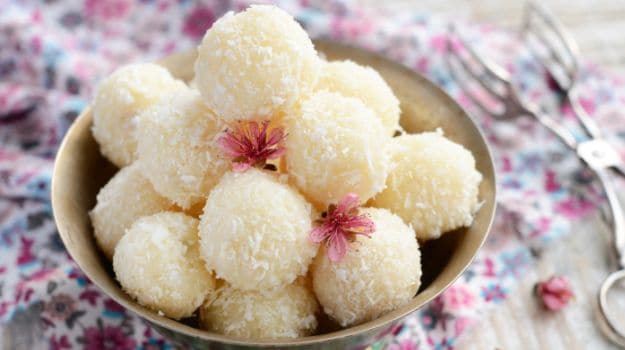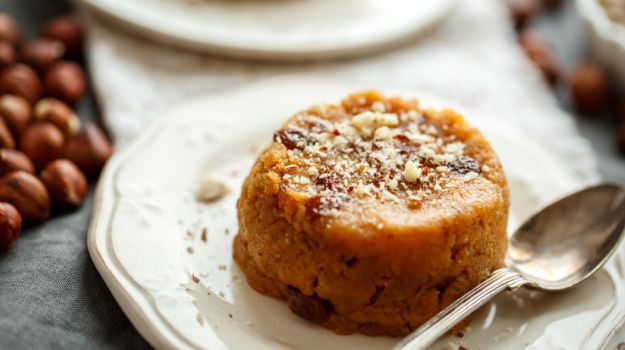And so Dussehra has left and brought in its wake the luminous delights of Diwali, the festival of lights: this year, the festivities start with Dhanteras 28th October, the main festivities taking place on 30th October.This is when India comes alive with the chiming of temple bells, the bursts of fireworks, the sparkle of oil lamps and the twinkle of fairy lights. Homes are decorated with flower garlands and bedecked with elaborate rangoli patterns - it is as if the country has adorned herself in an ephemeral but radiant cloak.How it All Began
A very long time ago, Lord Rama fought a furious, pitched battle against Ravana, who had kidnapped his virtuous wife, Sita. Rama won, and returned home with his wife and brother, Laxmana. Overjoyed, his subjects lit the way with heaps of oil lamps, thus paving the way for the lighting of diyasfor all Diwalis henceforth. The lights also symbolise the victory of light over darkness, of good over evil. During Diwali, worshippers pray to Lakshmi (the goddess of wealth) and Ganesha (the lord of good fortune).Some days after Diwali, on Kartik Purnima, it is said that the Gods descend on the holy Ganga River to celebrate Dev Deepawali (the Diwali of the Gods). It is on this day that Varanasi comes alive. Pilgrims throng the holy city, submerging themselves in the river. At night, the ghats shimmer and shine with the gleam of a thousand oil lamps and the air is perfumed with the scent of incense. It is an extraordinary spectacle.Diwali FeastingIn Delhi, Diwali food is irrevocably entwined with its extravagant card parties. Today, all sorts of fancy dishes are served at the parties, but "My happiest memories are of me as a little girl, going with my grandma to Batashe wali galli to buy sweets," says Sayana Mehra who now lives in the UK. Kheel batasha and khilona i.e. sugar crafted into animal shapes, was an inescapable part of growing up in Delhi, and sales would soar during Diwali season. This was (and is) also the season for melas, stocked with thelawalas selling all manner of chaat, popcorn – the yellow popcorn trussed up tightly in plastic bags and candyfloss vendors hawking their lurid wares. Markets overflow with vendors selling clay and papier mâché toys for girls and boys and clay diyas. Shop shelves brim with pinni (dry fruit mithai), fudgy mohanthal, Kaju Barfi sheathed in a thin layer of vark, jalebis, laddoos etc. At Diwali, it doesn’t matter whether you are vegetarian or not - everyone is united over their love of sweets.

For Maharashtrians, the highlight of Diwali food is the sweet-and-savoury breakfast faral, as good as any banquet - shingris, (baked or deep-fried dumplings with a stuffing of fresh or desiccated coconut), various types of ladoos, the crescent-shaped karanjis, flaky ghee-soaked shankarpale, crunchy chivda, hot chaklis eaten with loni (white homemade butter); sweet, flaky chirote dusted with icing sugar and kept crisp or drenched in syrup; the biscuity anarsa made from rice-flour and jaggery. Often, dishes of pohewere also prepared as part of the breakfast, made in dozens of creative ways; pohe eaten with curds, pohe infused with tamarind, pohe cooked with with fresh coconut, pohe soaked in milk.The preparations for Diwali begin weeks before the festival itself. My friend Leena Vora remembers how, as a child, her mother would start slaving away in the kitchen making faral, at least a week before Diwali day. "She used to deep fry the diamond-shaped namakpare, chaklis and finally prepare tasty ladoos, then hide them away carefully in big jars. My brother and I were exceptionally greedy children and once, we finished the entire jar of chaklis before Diwali itself," she laughs. "It was the most wonderful celebration though. After the naivedyam (offering to the gods), we used to fall upon the faral."Meanwhile, my Tamilian friend Jagan Ramamurthy recalls a similar spread laid out by his mother on Diwali. "We used to wake up early in the morning, anoint ourselves with oils and dress up in new clothes. Mum would make lots of fresh, hot snacks that we would eat through the day. My favourite was the pillowy-soft, sweet badusha, which she would garnish with chopped pistachios."In the days of the joint family, all the ladies of the house would sit together and prepare a grand Deepawalibakshanam (snacks), a veritable feast of sweets and savouries. There would be coils of thenkuzhal made by frying rice flour and urad dal; fried murukku (in various shapes); spicy kara sev; a spicy, dark concoction called Deepawali marundhu; golden ribbon pakoda made with chickpea and rice flour; crispy, puri-like thattai and chivda-like Madras mixture. To satisfy one's sweet tooth, there would be rawa and besan laddoos, Mysore pak, the aforementioned badusha, halwas and piping hot jangiris (imartis) made with urad dal and drenched in sugar syrup.
 The Gujarati version of these snacks is called farsan. One of my favourites among the Diwali spread is the ghugra or gujia, moon-shaped pastries that are usually stuffed with green peas and sometimes coconut laced with cardamom. The ghugra looks and tastes similar to the Maharashtrian karanji. Crunchy chakris and mathia (a sort of spicy fried papad), the wafer-like fafra (a close relative of the Tamilian ribbon murukku), kachoris and the intriguing cholafali - savoury-spicy flour fingers are also offered as part of Diwali farsan.In Kolkata, the festivities are focussed on Kali Puja, which occurs around the same time as Diwali. Traditional Bengali bhog such as khichuri, kosha mangsho, mutton curries are eaten at this time with mishti to sweeten the mouth. The perfect end to the meal!Disclaimer:The opinions expressed within this article are the personal opinions of the author. NDTV is not responsible for the accuracy, completeness, suitability, or validity of any information on this article. All information is provided on an as-is basis. The information, facts or opinions appearing in the article do not reflect the views of NDTV and NDTV does not assume any responsibility or liability for the same.
The Gujarati version of these snacks is called farsan. One of my favourites among the Diwali spread is the ghugra or gujia, moon-shaped pastries that are usually stuffed with green peas and sometimes coconut laced with cardamom. The ghugra looks and tastes similar to the Maharashtrian karanji. Crunchy chakris and mathia (a sort of spicy fried papad), the wafer-like fafra (a close relative of the Tamilian ribbon murukku), kachoris and the intriguing cholafali - savoury-spicy flour fingers are also offered as part of Diwali farsan.In Kolkata, the festivities are focussed on Kali Puja, which occurs around the same time as Diwali. Traditional Bengali bhog such as khichuri, kosha mangsho, mutton curries are eaten at this time with mishti to sweeten the mouth. The perfect end to the meal!Disclaimer:The opinions expressed within this article are the personal opinions of the author. NDTV is not responsible for the accuracy, completeness, suitability, or validity of any information on this article. All information is provided on an as-is basis. The information, facts or opinions appearing in the article do not reflect the views of NDTV and NDTV does not assume any responsibility or liability for the same.
A very long time ago, Lord Rama fought a furious, pitched battle against Ravana, who had kidnapped his virtuous wife, Sita. Rama won, and returned home with his wife and brother, Laxmana. Overjoyed, his subjects lit the way with heaps of oil lamps, thus paving the way for the lighting of diyasfor all Diwalis henceforth. The lights also symbolise the victory of light over darkness, of good over evil. During Diwali, worshippers pray to Lakshmi (the goddess of wealth) and Ganesha (the lord of good fortune).Some days after Diwali, on Kartik Purnima, it is said that the Gods descend on the holy Ganga River to celebrate Dev Deepawali (the Diwali of the Gods). It is on this day that Varanasi comes alive. Pilgrims throng the holy city, submerging themselves in the river. At night, the ghats shimmer and shine with the gleam of a thousand oil lamps and the air is perfumed with the scent of incense. It is an extraordinary spectacle.Diwali FeastingIn Delhi, Diwali food is irrevocably entwined with its extravagant card parties. Today, all sorts of fancy dishes are served at the parties, but "My happiest memories are of me as a little girl, going with my grandma to Batashe wali galli to buy sweets," says Sayana Mehra who now lives in the UK. Kheel batasha and khilona i.e. sugar crafted into animal shapes, was an inescapable part of growing up in Delhi, and sales would soar during Diwali season. This was (and is) also the season for melas, stocked with thelawalas selling all manner of chaat, popcorn – the yellow popcorn trussed up tightly in plastic bags and candyfloss vendors hawking their lurid wares. Markets overflow with vendors selling clay and papier mâché toys for girls and boys and clay diyas. Shop shelves brim with pinni (dry fruit mithai), fudgy mohanthal, Kaju Barfi sheathed in a thin layer of vark, jalebis, laddoos etc. At Diwali, it doesn’t matter whether you are vegetarian or not - everyone is united over their love of sweets.

For Maharashtrians, the highlight of Diwali food is the sweet-and-savoury breakfast faral, as good as any banquet - shingris, (baked or deep-fried dumplings with a stuffing of fresh or desiccated coconut), various types of ladoos, the crescent-shaped karanjis, flaky ghee-soaked shankarpale, crunchy chivda, hot chaklis eaten with loni (white homemade butter); sweet, flaky chirote dusted with icing sugar and kept crisp or drenched in syrup; the biscuity anarsa made from rice-flour and jaggery. Often, dishes of pohewere also prepared as part of the breakfast, made in dozens of creative ways; pohe eaten with curds, pohe infused with tamarind, pohe cooked with with fresh coconut, pohe soaked in milk.The preparations for Diwali begin weeks before the festival itself. My friend Leena Vora remembers how, as a child, her mother would start slaving away in the kitchen making faral, at least a week before Diwali day. "She used to deep fry the diamond-shaped namakpare, chaklis and finally prepare tasty ladoos, then hide them away carefully in big jars. My brother and I were exceptionally greedy children and once, we finished the entire jar of chaklis before Diwali itself," she laughs. "It was the most wonderful celebration though. After the naivedyam (offering to the gods), we used to fall upon the faral."Meanwhile, my Tamilian friend Jagan Ramamurthy recalls a similar spread laid out by his mother on Diwali. "We used to wake up early in the morning, anoint ourselves with oils and dress up in new clothes. Mum would make lots of fresh, hot snacks that we would eat through the day. My favourite was the pillowy-soft, sweet badusha, which she would garnish with chopped pistachios."In the days of the joint family, all the ladies of the house would sit together and prepare a grand Deepawalibakshanam (snacks), a veritable feast of sweets and savouries. There would be coils of thenkuzhal made by frying rice flour and urad dal; fried murukku (in various shapes); spicy kara sev; a spicy, dark concoction called Deepawali marundhu; golden ribbon pakoda made with chickpea and rice flour; crispy, puri-like thattai and chivda-like Madras mixture. To satisfy one's sweet tooth, there would be rawa and besan laddoos, Mysore pak, the aforementioned badusha, halwas and piping hot jangiris (imartis) made with urad dal and drenched in sugar syrup.

Advertisement









